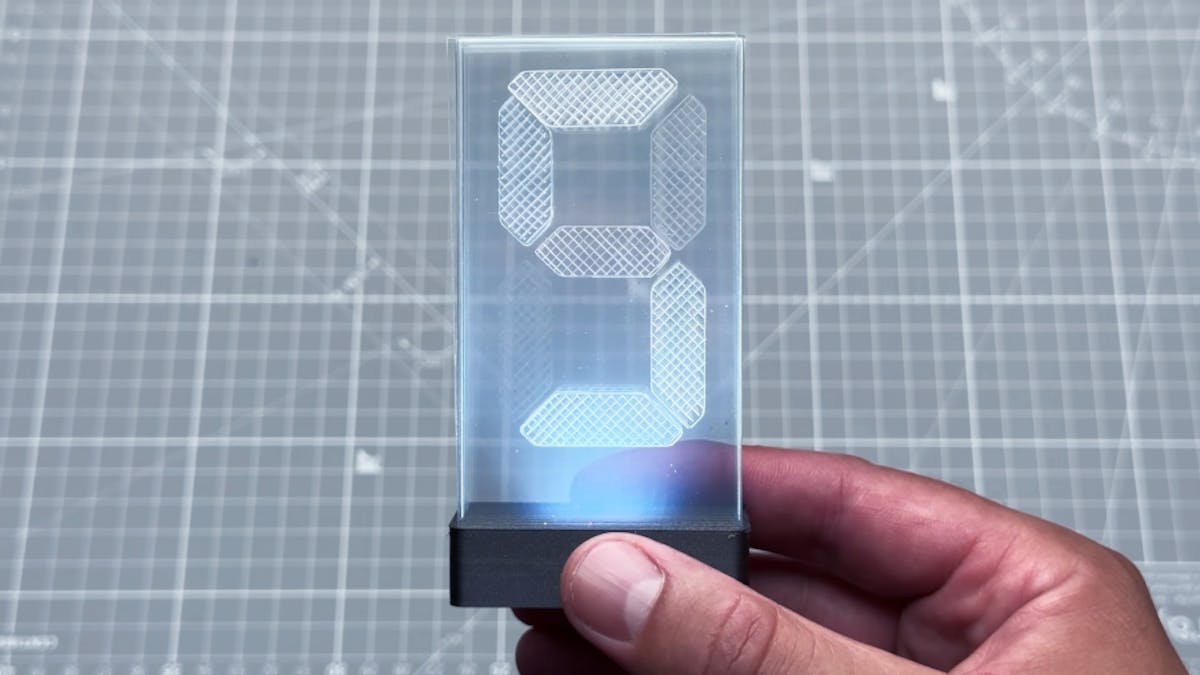This Transparent Edge-Lit Seven-Segment Display Is Clearly a Great Build
Designed to mimic a traditional numerical display, this acrylic build relies on edge lighting through a 3D-printed mount.

Pseudonymous YouTuber "upir" has come with with a way to build their own transparent seven-segment displays — lit from the edge, to prevent the electronics from getting in the way of the view.
"The displays are quite simple," upir explains of the off-the-shelf devices they sought to recreate. "If you take a piece of glass or acrylic, or pretty much anything transparent — and I have this piece of acrylic which is supposed to be like a blank business card."
"If you take that," upir continues, "and shine [an] LED from the edge […] the light will travel inside the acrylic and bounce around. If you scratch or etch the front side […] the light will bounce off this scratch, and as a result this area will be shining much more. And that's pretty much how the edge-lighted displays work."
Building your own edge-lit display is easy: take a transparent material, scratch or etch a design into it, and light it from the edge. Making a display you can control beyond on, off, and changing the color, though, is trickier — which is where upir's stacked design comes in.
Inspired by both off-the-shelf edge-lit acrylic displays and traditional LED- and LCD-based seven-segment displays, upir's take on the concept uses a stack of transparent acrylic sheets held in place with a 3D-printed mount. The edge of each sheet is placed over a row of an 8×8 RGB LED matrix — one sheet per row. The sheets, meanwhile, are etched with a seven-segment pattern, one segment per sheet.

With all the LEDs off, the display is largely transparent — a little hazy, thanks to the multiple stacked layers, but you can see through it well enough. Turn on one row of LEDs, though, and the segment etched on that acrylic piece lights up. Illuminate multiple rows, and you can turn on more than one segment — allowing you to display arbitrary numbers, just like a traditional LED or LCD seven-segment display.
More details on the build are available in the video embedded above and on upir's YouTube channel, while the maker has released Arduino sketch code, 3D print files, and etch tracing guides on GitHub under the permissive MIT license.
Freelance journalist, technical author, hacker, tinkerer, erstwhile sysadmin. For hire: freelance@halfacree.co.uk.


